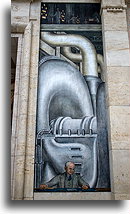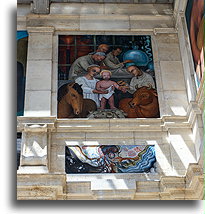It was the large frescoes of Diego Rivera that started the muralism, movement in Mexican and international art. His best known work is his stairway murals known as History of Mexico in the National Palace in Mexico City.
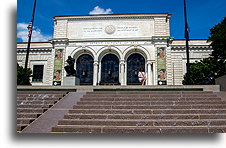
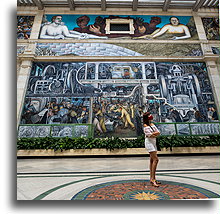
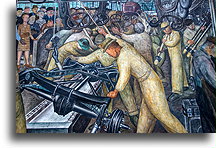
In 1932, during the Great Depression, Rivera was hired by the Detroit Institute of Art, Michigan, (USA) for a project to paint fresco murals about the industry in Detroit. The mural consists of 27 panels. The largest of them show the workers in the Ford factory at all stages of the automobile production. For Rivera, this was a pretext to explore the relationship between man and machine. The painter also focused on technology as an essential element of the future of our civilization.
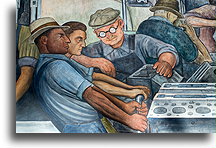
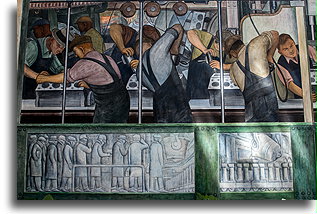
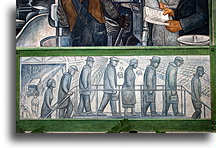
Rivera's work was controversial from the very beginning. Some viewed the murals as Marxist propaganda; others saw them as vulgar and un-American. The Catholic and Episcopal clergy condemned the murals as blasphemous and asked for their removal. It was probably because the painter expressed the image of the holy family in an extremely modern way. One of the panels presents Joseph as a doctor with a nurse who is to be Mary. Together, they administer a vaccination to the Christ-like child.
